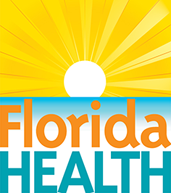It's a New Day in Public Health.
The Florida Department of Health works to protect, promote, and improve the health of all people in Florida through integrated state, county, and community efforts.
Reducing Tobacco Use in Santa Rosa County Through Parks and Beach Ordinances
March 15, 2024
Tobacco Free Florida in Santa Rosa County and Students Working Against Tobacco (SWAT), alongside local community partners, are working towards reducing the prevalence of tobacco use and expanding smokefree environments by educating the community and local leaders on the benefits of implementing local tobacco free parks and beaches policies. These policies can help keep our beaches and parks safe, healthy, and clean of debris, including cigarette butts and vape cartridges.
Tobacco free spaces support our community in many ways. These spaces improve health by providing fewer opportunities for youth to start smoking[i]and reducing secondhand smoke exposure.[ii] Across the nation, cigarettes are by far the most littered item in the country.[iii] Cigarette butts are harmful if ingested by children, pets, or other animals.[iv] These ordinances help lower cigarette litter,[v] encourage people to make healthy choices, and increase quit attempts.[vi],[vii],[viii]
If you’re interested in learning more about the benefits, Tobacco Free Florida can help. Contact your local Tobacco Free Florida Representative, Vince Nguyen, Health Educator Consultant at Vince.Nguyen@flhealth.gov or call 850-564-2253.
About Tobacco Free Florida
The Florida Department of Health’s Tobacco Free Florida campaign is a statewide cessation and prevention campaign funded by Florida’s tobacco settlement fund. Since the program began in 2007, more than 295,000 Floridians have successfully quit using one of Tobacco Free Florida's free tools and services. There are now approximately 451,000 fewer adult smokers in Florida than there were 10 years ago, and the state has saved $17.7 billion in health care costs. To learn more about Tobacco Free Florida’s Quit Your Way services, visit www.tobaccofreeflorida.com or follow the campaign on Facebook at www.facebook.com/TobaccoFreeFlorida or on X (formerly Twitter) at www.twitter.com/tobaccofreefla.
[i] Siegel M, Albers AB, Cheng DM, Biener L, Rigotti NA. Local Restaurant Smoking Regulations and the Adolescent Smoking Initiation Process: Results of a Multilevel Contextual Analysis Among Massachusetts Youth. Archives of Pediatric and Adolescent Medicine 2008;162(5):477–83. [accessed August 4, 2020].
[ii] U.S. Department of Health and Human Services. The Health Consequences of Involuntary Exposure to Tobacco Smoke: A Report of the Surgeon General. Atlanta, GA: U.S. Department of Health and Human Services, Centers for Disease Control and Prevention, National Center for Chronic Disease Prevention and Health Promotion, Office on Smoking and Health, 2006. [accessed August 4, 2020].
[iii] Keep America Beautiful. (2021, May). Keep America Beautiful 2020 National Litter Study Summary Report.
[iv] Micevska, T., Warne, M. S., Pablo, F., & Patra, R. (2006). Variation in, and causes of, toxicity of cigarette butts to a cladoceran and microtox. Archives of environmental contamination and toxicology, 50(2), 205–212. https://doi.org/10.1007/s00244-004-0132-y
[v] U.S. Department of Health and Human Services. The Health Consequences of Involuntary Exposure to Tobacco Smoke: A Report of the Surgeon General. Atlanta, GA: U.S. Department of Health and Human Services, Centers for Disease Control and Prevention, National Center for Chronic Disease Prevention and Health Promotion, Office on Smoking and Health, 2006. [accessed August 4, 2020].
[vi] U.S. Department of Health and Human Services. The Health Consequences of Involuntary Exposure to Tobacco Smoke: A Report of the Surgeon General. Atlanta, GA: U.S. Department of Health and Human Services, Centers for Disease Control and Prevention, National Center for Chronic Disease Prevention and Health Promotion, Office on Smoking and Health, 2006. [accessed August 4, 2020].
[vii] Hopkins DP, Razi S, Leeks KD, Priva Kalra G, Chattopadhyay SK, Soler RE, et al. Task Force on Community Preventive Services. Smoke-Free Policies to Reduce Tobacco Use: A Systematic Review. American Journal of Preventive Medicine 2010;38(2 Suppl):S275–89. [accessed August 4, 2020].
[viii] International Agency for Research on Cancer (IARC). IARC Handbooks of Cancer Prevention, Tobacco Control, Volume 13: Evaluating the Effectiveness of Smoke-Free PoliciesCdc-pdf External Lyon, France: WHO, 2009. [accessed August 4, 2020].



Connect with DOH